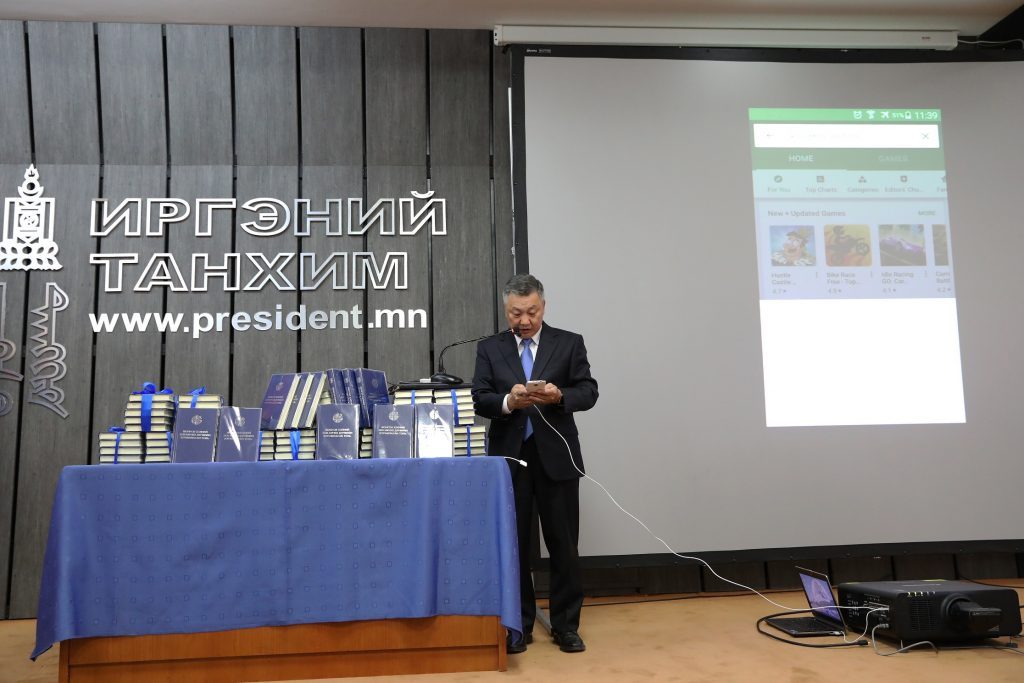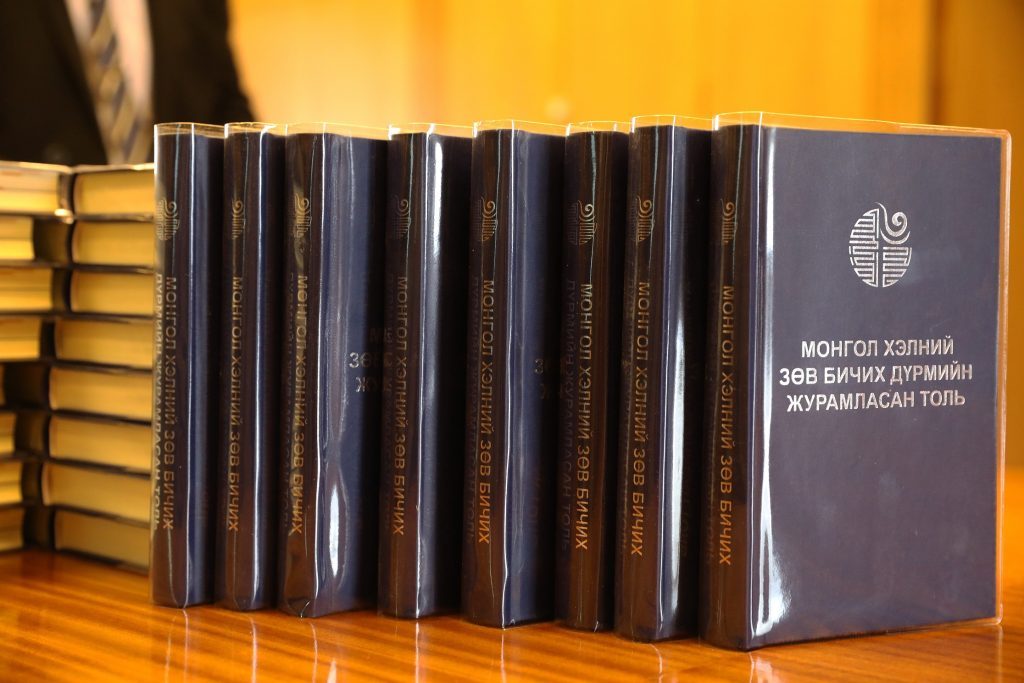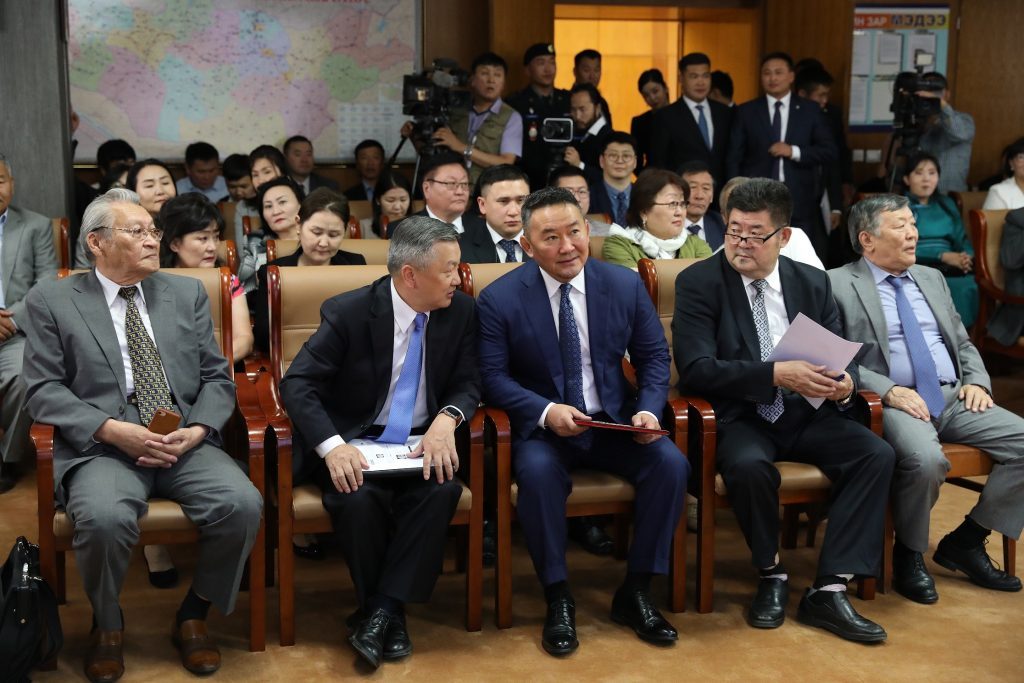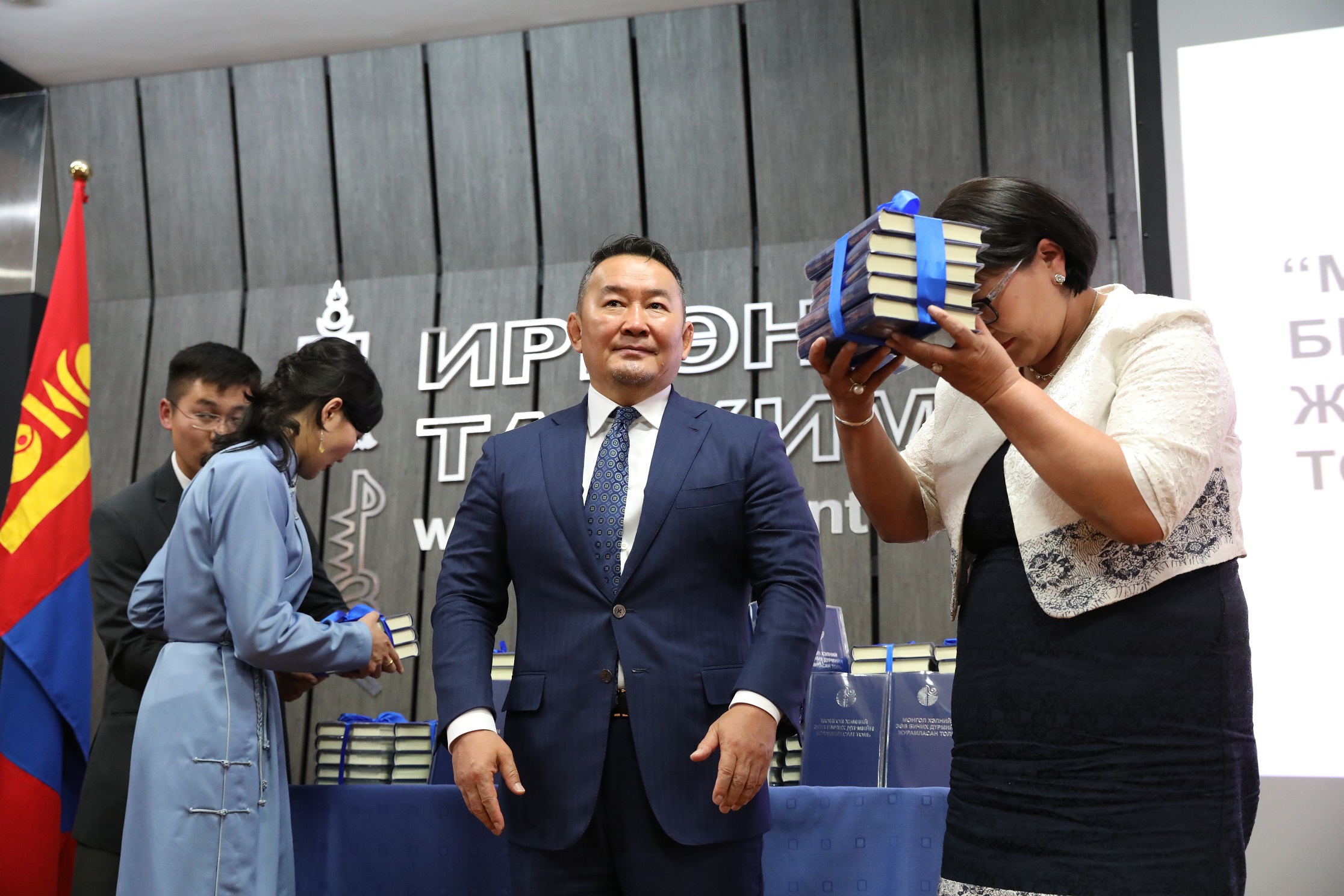PRESIDENT ATTENDS LAUNCH CEREMONY OF A MONGOLIAN SPELLING DICTIONARY
President of Mongolia Khaltmaagiin Battulga attended a launch ceremony for a new publication titled “Regulatory Dictionary of the Spelling Rules in Mongolian Language”, held today in the Citizen Hall of the State Palace. The “Regulatory Dictionary of the Spelling Rules in Mongolian Language” was published by the National Council on Language Policy under the President.
Present at the ceremony were, Chief of Staff of the President’s Office Z.Enkhbold, members of the National Council on Language Policy, scholars, academics, teachers and representatives of some organizations, including the Mongolian Academy of Sciences, libraries in Ulaanbaatar and the International Association for Mongolian Studies.
In his opening remarks, President Battulga said:
“Hello,
We are gathered here today in connection to the release of the “Regulatory Dictionary of the Spelling Rules in Mongolian Language”, which is highly important to the Mongolian culture, and in terms of its lingual use. National language and culture, especially written culture, represent a means of national identity and communication, and an expression carrying the national mindset.
Although Mongolia introduced a new writing system and culture by formally adopting the Mongolian Cyrillic alphabet in 1941, the matter of the spelling regulation was left behind. Later, academician Ts.Damdinsuren and B.Osor published a regulatory dictionary containing 18,000 headwords in 1983. It has been 35 years since then, however, there are many words that are exceptions to the spelling rule, and are not formally regulated, thus causing argument.
Self-willed misspelling of Mongolian words is not only increasing among linguists and citizens with the use of online platforms, but also observed on daily newspapers and books at times. Moreover, there have been times where a random individual came up with his or her spelling rules, and called for removing some letters from the alphabet. The root of this problem was the ignorance toward the official regulation and formalization of the spelling of Mongolian words by the government. And now, the “Regulatory Dictionary of the Spelling Rules in Mongolian Language”, comprising 38,000 headwords with grammatical transformations, will play a crucial role in settling all arguments and regulating the spelling once and for all.
I appreciate that the “Regulatory Dictionary of the Spelling Rules in Mongolian Language” has been published as a result of consensus reached by the linguists. I would like to underline one thing.
Starting today, all citizens, public servants, scholars, experts, publishing houses and news desks of Mongolia are bound to use and follow this dictionary in their daily activities. Regardless of one’s interest, belief and personal opinion, spelling rules should be followed universally and consistently nationwide. It is time to forget one’s personal intention and contradictory attitude. Obviously, some linguists and experts might find reasons to object and criticize. If we are to take account of everyone’s idea and opinion, there will be no dictionary of spelling rules, and it will remain a topic of unending arguments. Therefore, it is necessary that everyone sees this dictionary as official Government regulation, and complies with it. In terms of its lingual use, the “Regulatory Dictionary of the Spelling Rules in Mongolian Language” is a document that must be complied with like a constitution. Starting today, the dictionary is being distributed online free of charge.
I call for every Mongolian’s participation in the universalization of the spelling of Mongolian words, while remembering the poem verse by writer D.Natsagdorj that says, “The national language we learn since childhood, a culture that can’t be forgotten”.
May the Mongolian language and culture flourish forever under the Eternal Sky.”
Following the President’s speech, Chief of Staff Mr. Z.Enkhbold briefed the ceremony attendees on the availability of the dictionary. The dictionary is accessible on all digital devices, and the pdf version can be found at president.mn and toli.gov.mn.





